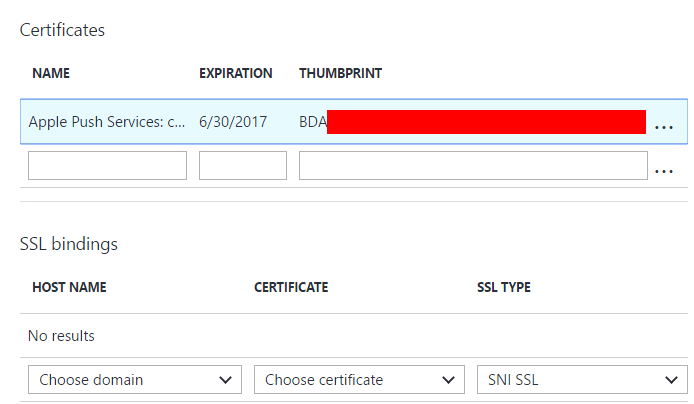My app just got ready for sale on App Store, but none of my production devices (devices that have installed the app from App Store) are getting push notifications. When I try to send a push notification to a production device, I am getting this error:
"The credentials supplied to the package were not recognized"
(System.ComponentModel.Win32Exception)
This exception is internally thrown and caught in an infinite loop:

It is thrown at line 539 of ApplePushChannel.cs file:
try
{
stream.AuthenticateAsClient(this.appleSettings.Host, this.certificates,
System.Security.Authentication.SslProtocols.Ssl3, false);
//stream.AuthenticateAsClient(this.appleSettings.Host);
}
catch (System.Security.Authentication.AuthenticationException ex)
{
throw new ConnectionFailureException("SSL Stream Failed to Authenticate as Client", ex);
}
This is the output of the application in Visual Studio Output:
...
A first chance exception of type 'System.ComponentModel.Win32Exception' occurred in System.dll
A first chance exception of type 'System.ObjectDisposedException' occurred in System.dll
A first chance exception of type 'System.ComponentModel.Win32Exception' occurred in System.dll
A first chance exception of type 'System.ObjectDisposedException' occurred in System.dll
A first chance exception of type 'System.ComponentModel.Win32Exception' occurred in System.dll
A first chance exception of type 'System.ObjectDisposedException' occurred in System.dll
A first chance exception of type 'System.ComponentModel.Win32Exception' occurred in System.dll
A first chance exception of type 'System.ObjectDisposedException' occurred in System.dll
A first chance exception of type 'System.ComponentModel.Win32Exception' occurred in System.dll
...(it keeps getting thrown until I stop it manually)
Here are the things I've tried:
- Double checked that the device ID I'm trying is registered with a production device token.
- Revoked and regenerated the APNS Production certificate, exported it with the private key to a new
.p12file, and tried again with the new certificate. (I had the same problem with development push notifications, and this solved my problem) - Changed the SSL protocol from
Ssl3toTls. (a few days ago there was a problem with protocol version, and it fixed a problem temporarily. There shouldn't be need for this, but the error I'm getting is the same as the one I was getting before which this fixed) - Checked that I'm actually trying to connect to production server with the production certificate instead of development server/certificate.
- Checked that I can access the APNS server directly (my ASP.NET app lives inside a Parallels VM Windows 8.1 at my Mac, here is the output from my Mac, just to avoid confusion:
(Terminal output) Edit: I was pinging the sandbox server, I've pinged the production server, I verify that I can connect to it too, so it's not the issue.
can$ sudo nmap -p 2195 gateway.sandbox.push.apple.com
Starting Nmap 6.40-2 ( http://nmap.org ) at 2014-04-28 00:06 EEST
Nmap scan report for gateway.sandbox.push.apple.com (17.149.34.189)
Host is up (0.49s latency).
Other addresses for gateway.sandbox.push.apple.com (not scanned): 17.149.34.187 17.149.34.188
PORT STATE SERVICE
2195/tcp open unknown
Why would PushSharp not negotiate with APNS servers?

